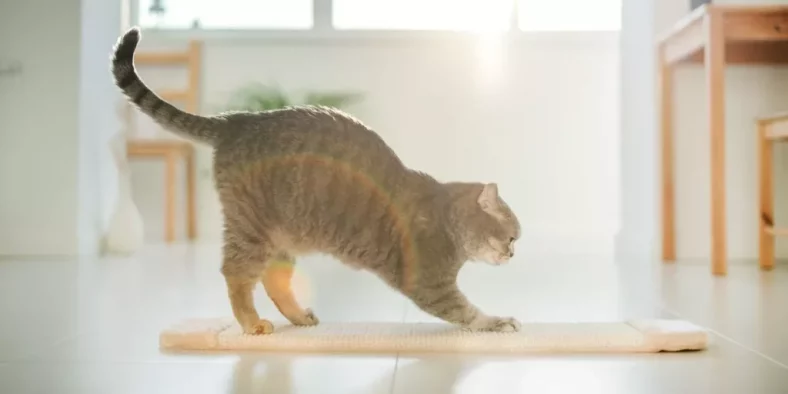Why Is Cat Scratching Behavior Important, and How Can You Manage It?

Understanding why your cat scratches and how to manage this behavior is crucial for a harmonious coexistence. Cat scratching serves multiple purposes beyond just sharpening claws, and knowing how to address it can prevent unwanted repercussions in your home. By exploring the significance of this behavior and effective management techniques, you can cultivate a more fulfilling relationship with your feline friend.
The Significance of Cat Scratching Behavior
Understanding why cats scratch is essential for cat owners to provide appropriate outlets for this natural behavior. Cats scratch for various reasons, and by comprehending the significance behind this behavior, you can better cater to your feline friend’s needs.
One crucial reason cats scratch is to mark their territory. When cats scratch, they leave both a visual mark and a scent from the glands in their paws, establishing their presence in the area. This behavior is instinctual and helps cats feel more secure in their environment.
Another important aspect of cat scratching behavior is that it helps cats maintain their claw health. By scratching, cats can shed the outer layers of their claws, keeping them sharp and healthy. Additionally, scratching provides cats with a form of exercise, helping them stretch their muscles and maintain their agility.
Understanding these aspects of cat scratching behavior can help you create a cat-friendly environment that allows your feline companion to engage in this natural behavior without causing damage to your furniture.
Understanding the Reasons Behind Scratching
Scratching is a natural behavior for cats that serves multiple purposes beyond just sharpening their claws. Cats scratch to mark their territory, both visually through the physical marks they leave and with scent glands in their paws. This scent marking helps cats communicate with other felines in the area. Additionally, scratching helps cats stretch their muscles and maintain healthy claws by removing the outer sheath of their nails. It also provides a way for cats to relieve stress and express emotions such as excitement or frustration. Understanding the reasons behind scratching can help you address this behavior more effectively.
It’s essential to recognize that scratching is a normal feline behavior rooted in instinct. By understanding why cats scratch, you can better appreciate their needs and provide appropriate outlets for this behavior. Rather than trying to eliminate scratching altogether, consider providing your cat with suitable scratching posts or pads to redirect their behavior in a positive way. Meeting your cat’s scratching needs will contribute to a harmonious relationship between you and your feline companion.
Importance of Managing Cat Scratching
Managing your cat’s scratching behavior is crucial for maintaining a happy and healthy relationship with your feline companion. Scratching is a natural behavior for cats that serves various purposes, including marking territory, stretching their muscles, and maintaining their claw health. Allowing your cat to scratch inappropriately can lead to damage to your furniture, carpets, and other household items, causing frustration and potential conflicts between you and your pet.
By actively managing your cat’s scratching behavior, you can prevent these issues and foster a harmonious living environment. Providing appropriate scratching posts, regularly trimming your cat’s claws, and engaging in interactive play sessions can help redirect their scratching instincts in a positive way. Additionally, understanding your cat’s preferences for scratching surfaces and placements can aid in effectively managing their behavior.
Neglecting to address your cat’s scratching habits can result in stress for both you and your pet, potentially leading to a strained relationship. Therefore, taking proactive steps to manage your cat’s scratching behavior is essential for creating a happy and fulfilling bond with your beloved feline friend.
Effective Strategies for Redirecting Scratching
To effectively redirect your cat’s scratching behavior, provide enticing alternative surfaces for them to scratch on. Cats have a natural instinct to scratch, so offering attractive scratching posts or pads can help steer them away from your furniture. Place these alternatives near the areas your cat tends to scratch the most. Different cats prefer different textures, so experiment with different materials like sisal, cardboard, or carpet to see what your cat likes best.
Another effective strategy is to make the areas you don’t want your cat to scratch less appealing. You can do this by covering them with double-sided tape or aluminum foil, as most cats dislike the texture. Additionally, using deterrent sprays with scents like citrus or menthol can help discourage scratching in unwanted areas.
Consistency is key when redirecting your cat’s scratching behavior. Reward your cat with treats or praise when they use the appropriate scratching surfaces and gently redirect them if they start scratching elsewhere. With patience and positive reinforcement, you can successfully manage your cat’s scratching habits.
Tips for Harmonious Cat-Owner Relationship
When fostering a harmonious relationship with your cat, establishing trust and understanding their unique preferences is key. Cats thrive on routine, so try to keep their feeding, playtime, and sleeping schedule consistent. Creating a safe and enriching environment is crucial; provide scratching posts, cozy hiding spots, and interactive toys to keep them mentally and physically stimulated.
Communicate with your cat through gentle petting, soothing tones, and positive reinforcement when they exhibit good behavior. Respect their boundaries – if your cat signals that they need space, give them room to retreat and relax. Pay attention to their body language and vocalizations to better understand their feelings and needs.
Regular veterinary check-ups, proper grooming, and a balanced diet are essential for your cat’s well-being. Show them love and affection, but also allow them independence when they seek it. Remember, a happy and content cat is more likely to engage positively with you and their surroundings, strengthening the bond between you both.
Trending Products










